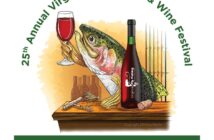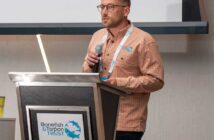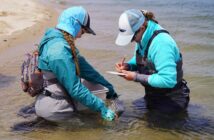A new NOAA report shows that the last decade has been a period of progress in rebuilding depleted fish stocks, sustaining many fisheries populations, and gaining a better understanding of the complex relationships between marine species and their habitats.
The report cites the Alaskan groundfish fisheries—walleye pollock, Pacific cod, rockfishes and Atka mackerel—as a prime example of how managers and fishermen are working together to keep fish harvest rates at sustainable levels while reducing risks to other species in the ecosystem, including marine mammals, juvenile fish and other fish species not being targeted.
These findings are one of a number of highlights from the nation’s coastal communities that are described in the newly released NOAA report Our Living Oceans: Report on the Status of U.S. Living Marine Resources.
The report also describes how closed areas and other management of fishing areas—called place-based management—are helping to restore ecosystems. By closing several areas in the Northeast off New England, depleted groundfish stocks are being rebuilt while allowing some sustainable fishing for rebuilt populations of sea scallops. The West Coast is in the forefront of using place-based management through a network of marine conservation areas that have been established to protect habitat and assist in the rebuilding of depleted groundfish populations.
“Our Living Oceans describes the successes in rebuilding some depleted fish stocks and restoring and protecting our ocean ecosystems,” said Jane Lubchenco, Ph.D., under secretary of commerce for oceans and atmosphere and NOAA administrator. “It also outlines the challenges we face and measures we are taking to end overfishing and restore the healthy and resilient ecosystems that sustain the lives and livelihoods of people in the nation’s coastal communities.”
The report describes the increasing use of catch share programs to manage fisheries supporting coastal communities. The report describes one example of an effective catch share program. Now nearly 15 years old, the program for halibut in Alaska has extended the season from less than a week to eight months, helped raise the value and quality of the catch in the marketplace, improved fishermen’s safety and reduced unintended bycatch of juvenile halibut and other species.
While the report details much progress, it also outlines significant challenges, including ending overfishing for about 20 percent of U.S. stocks where overfishing persists.
The Northeast continues to have the largest number of overfished stocks of any region, despite significant progress with some stocks due to fishing restrictions. Other areas of concern include the low populations of reef fishes— which grow slowly and reproduce late—in the South Atlantic and Gulf of Mexico, where fishing has increased as human populations have grown.
The report also outlines the status of many marine mammals and sea turtles. Recent stock assessments in Alaska show continued increases for bowhead, gray whales and North Pacific humpback whales. However, the stocks of northern fur seals have been decreasing and the Cook Inlet beluga whale has been classified as endangered.
This sixth edition of Our Living Oceans, is now available online at http://www.st.nmfs.noaa.gov/LivingOceans.html, and will be available in print soon from the NOAA’s Fisheries Service Office of Science and Technology.
NOAA understands and predicts changes in the Earth’s environment, from the depths of the ocean to the surface of the sun, and conserves and manages our coastal and marine resources. Visit us at http://www.noaa.gov or on Facebook at http://www.facebook.com/noaa.lubchenco.
Contact: Connie Barclay
301-713-2370
Monica Allen
301-713-2370



